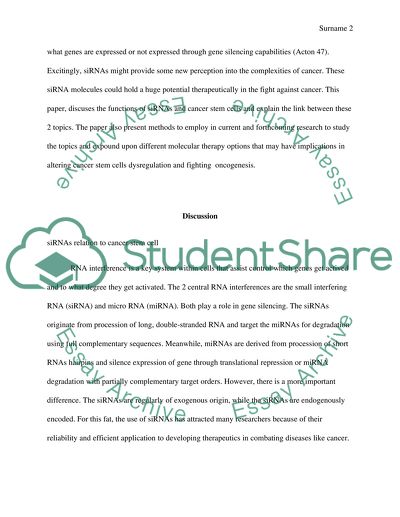Cite this document
(“Regulation of cancer cell proliferation using siRNA tchnology Research Paper - 1”, n.d.)
Regulation of cancer cell proliferation using siRNA tchnology Research Paper - 1. Retrieved from https://studentshare.org/health-sciences-medicine/1610055-regulation-of-cancer-cell-proliferation-using-sirna-tchnology
Regulation of cancer cell proliferation using siRNA tchnology Research Paper - 1. Retrieved from https://studentshare.org/health-sciences-medicine/1610055-regulation-of-cancer-cell-proliferation-using-sirna-tchnology
(Regulation of Cancer Cell Proliferation Using SiRNA Tchnology Research Paper - 1)
Regulation of Cancer Cell Proliferation Using SiRNA Tchnology Research Paper - 1. https://studentshare.org/health-sciences-medicine/1610055-regulation-of-cancer-cell-proliferation-using-sirna-tchnology.
Regulation of Cancer Cell Proliferation Using SiRNA Tchnology Research Paper - 1. https://studentshare.org/health-sciences-medicine/1610055-regulation-of-cancer-cell-proliferation-using-sirna-tchnology.
“Regulation of Cancer Cell Proliferation Using SiRNA Tchnology Research Paper - 1”, n.d. https://studentshare.org/health-sciences-medicine/1610055-regulation-of-cancer-cell-proliferation-using-sirna-tchnology.


